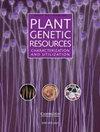濒危独特遗传资源“锡金原始”玉米DUS特征形态描述及分子特征
IF 0.7
4区 生物学
Q3 PLANT SCIENCES
Plant Genetic Resources: Characterization and Utilization
Pub Date : 2022-05-10
DOI:10.1017/s1479262122000065
引用次数: 1
摘要
“锡金原始玉米”(SP)在锡金被称为“murali makkai”,是一种独特的遗传资源,具有高产和优异的拔芽能力。由于其种群规模小,且在当地的保护工作被忽视,SP已达到灭绝的程度。为了保护和恢复这一地方品种,研究人员在不同生长阶段记录了31个形态分析性状,并利用SSR标记进行了分子鉴定。植株表现出多产性(5-6穗子/株)和优异的开穗能力及其他显著性状。植株高,茎细,松散下垂的穗状花序,花青素在颖片基部和支状根中存在。结果显示,22个SSR标记扩增出了100 ~ 800 bp的特异扩增序列,其中,bnlg1083、umc1353、umc1128、bnlg1017、bnlg2077、umc2298和umc2373标记扩增出的特异扩增序列范围为100 ~ 800 bp。对木螺的一组特征和分子特征的研究,将有利于木螺的遗传改良和遗传纯度的维持。本文章由计算机程序翻译,如有差异,请以英文原文为准。
Morphological description based on DUS characters and molecular characterization of ‘Sikkim Primitive’ maize: an endangered unique genetic resource
‘Sikkim Primitive’ (SP) maize locally known as ‘murali makkai’ in Sikkim is a unique genetic resource exhibiting prolificacy and excellent popping capacity. Status of SP has reached extinction level due to its very small population size and neglected conservation efforts in-situ. In an initial effort to conserve and revive this landrace, characterization and documentation was carried out with 31 morphologically assayed traits recorded at different growth stages along with molecular characterization with simple-sequence repeat (SSR) markers. Plants exhibited prolificacy (5–6 cobs/plant) and excellent popping capacity along with other distinct traits. Plants were tall with thin stem, loose drooping tassel with anthocyanin coloration present at the base of glumes and in brace roots. Cobs were medium sized carrying small seeds with low test weight (87.90 g). A total of 22 SSR markers show amplification in murali makkai with markers bnlg1083, umc1353, umc1128, bnlg1017, bnlg2077, umc2298 and umc2373 amplified unique amplicons ranging from 100 to 800 bp. The characterized set of traits and molecular characterization for murali makkai will facilitate in utilization for genetic improvement and maintenance of genetic purity.
求助全文
通过发布文献求助,成功后即可免费获取论文全文。
去求助
来源期刊

Plant Genetic Resources: Characterization and Utilization
Agricultural and Biological Sciences-Agronomy and Crop Science
CiteScore
2.80
自引率
0.00%
发文量
29
审稿时长
>12 weeks
期刊介绍:
Plant Genetic Resources is an international journal which provides a forum for describing the application of novel genomic technologies, as well as their integration with established techniques, towards the understanding of the genetic variation captured in both in situ and ex situ collections of crop and non-crop plants; and for the airing of wider issues relevant to plant germplasm conservation and utilisation. We particularly welcome multi-disciplinary approaches that incorporate both a technical and a socio-economic focus. Technical aspects can cover developments in technologies of potential or demonstrated relevance to the analysis of variation and diversity at the phenotypic and genotypic levels.
 求助内容:
求助内容: 应助结果提醒方式:
应助结果提醒方式:


